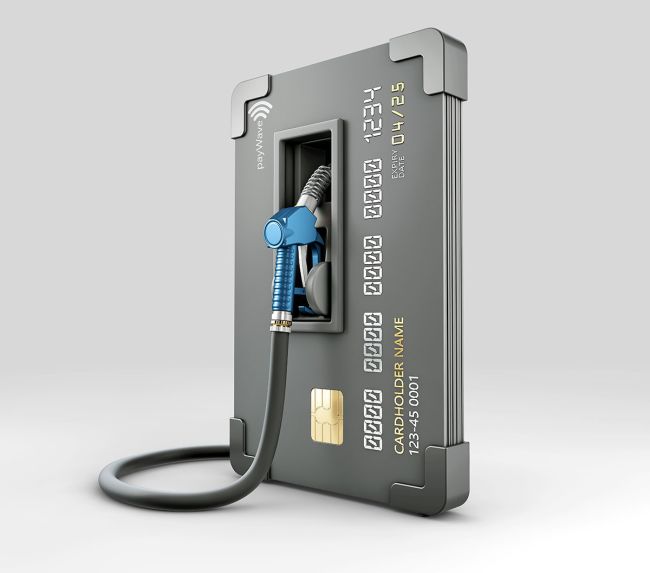
Navigating the Surge in Fuel Costs
High fuel prices have made it increasingly difficult for fleet operations to keep costs low – especially utility fleets, whose essential services require daily travel to job sites.
According to Dan Remmert, senior manager of fleet services for Ameren Illinois, “Not only are fuel prices at record highs, but pretty much everything else it takes to maintain a fleet is affected by higher cost.”
Oklahoma Gas & Electric, which operates a total of 2,240 assets – 55% gasoline and 45% diesel – is facing similar challenges. The utility has a 65% utilization rate, and its vehicles are collectively driven 14.5 million miles a year. According to Paul Jefferson, senior manager of fleet services for OG&E, fuel budget forecasting has been one of the biggest challenges resulting from fuel cost increases.
So, is it even possible to maintain efficiency and cost-effectiveness during these challenging times? Remmert and Jefferson recently shared with UFP how they are handling the current conditions.
Cut Back Where You Can
At Ameren Illinois, a vehicle’s fuel charges are allocated to the operations group that the vehicle is assigned to. Since Q1, the fleet services group has communicated to operations the challenges they are facing and where they are estimating the impact will be at year-end.
“We send email and weekly updates to senior leadership. We also meet with them to share best practices on how to manage costs,” Remmert said.
He noted that the fleet is currently focused on idle reduction and eliminating excess equipment. “Both can lower fuel spend, but it does take an organization-wide effort. The culture in many fleets to idle is strong. In many cases, the truck is more than transportation – it is the office and lunchroom. That is where technology can help with HVAC systems that can operate without idling.”
Remmert continued, “If you explain why and offer some flexibility on cab comfort, you can achieve savings. We have been adding the optional cab climate with our ePTO aerial. This is a parallel HVAC system that can run on electric or some other alternative power source to heat and cool the cab without idling. We are piloting several other systems that will do the same on our non-aerial units.”
In addition, the fleet has a renewed focus on idling goals, including a new and improved idling dashboard to provide even better access to valuable data. Operations personnel are currently being trained to utilize the data.
OG&E has also been promoting the reduction of excessive engine idling plus improving driver behaviors. Jefferson said the business unit managers use telematics and report monthly on the scorecards.
Ameren Illinois is re-evaluating fleet usage after the pandemic. To maintain safety during the pandemic, many fleets enforced limits of one individual per truck, which increased the number of vehicles in use as well as the amount of fuel consumption. The utility also allowed more people to report from home to avoid contact. Now that the pandemic is winding down, the company said it needs to evaluate their options once again to make sure they are optimizing their fleet resources.
Fuel Up On-Site
OG&E hedged diesel fuel through the end of the year at $3.50 and has asked operators to fuel internally as much as possible. Corporate emails are sent out to encourage fueling on-site.
“We purchase fuel from the rack and dispense from our on-site tanks. The cost of fuel is cheaper than retail: 10 to 30 cents [per gallon] less expensive depending on load size and location,” according to Jefferson.
Additionally, OG&E developed a dashboard for fuel reporting to help promote internal fueling. The dashboard features internal and external fueling data by business unit. Separating the business units allows supervisors to see data for just their group.
Ameren Illinois also offers some on-site fueling in addition to retail. “Our in-house model is slightly cheaper, but our service area is large and only 25% of our operating centers still have on-site fuel,” Remmert said.
Other Alternatives
Other ways Ameren Illinois has been trying to minimize fuel expenses include going greener, although this does come with challenges.
“Most investor-owned utilities have ambitious goals for electrification. However, the industry is lagging in developing work trucks with the duty cycle needed in our industry. We have several half-ton pickups on order in the coming years. Supply chain challenges with most OEMs have delayed deliveries a little,” Remmert said.
And while some fleets were moving away from diesel engines in many light- and medium-duty vehicles due to the increased cost of ownership, today’s higher gasoline costs are eating into that savings.
“The gas engines still seem to be a value, but mpg is lower,” Remmert said.
Another strategy that has helped during this time is increasing scrutiny of fuel purchases through increased monitoring and management. Ameren’s fuel card provider allows for transaction limits and spend limits at the card level, as well as a rigorous fraud detection ability.
“We really haven’t limited where we purchase yet, but we are looking at things like higher-level discounts on preferred providers,” Remmert noted.
OG&E is testing an artificial intelligence program, which is basically a bulk fuel-buying robot.
“It’s too early to tell the results,” Jefferson said. “If it works, we will try it in the future. We just started testing it against our normal buyer to see if it performs better.”
About the Author: Grace Suizo has been covering the automotive fleet industry since 2007. She spent six years as an editor for five fleet publications and has written more than 100 articles geared toward both commercial and public sector fleets.

